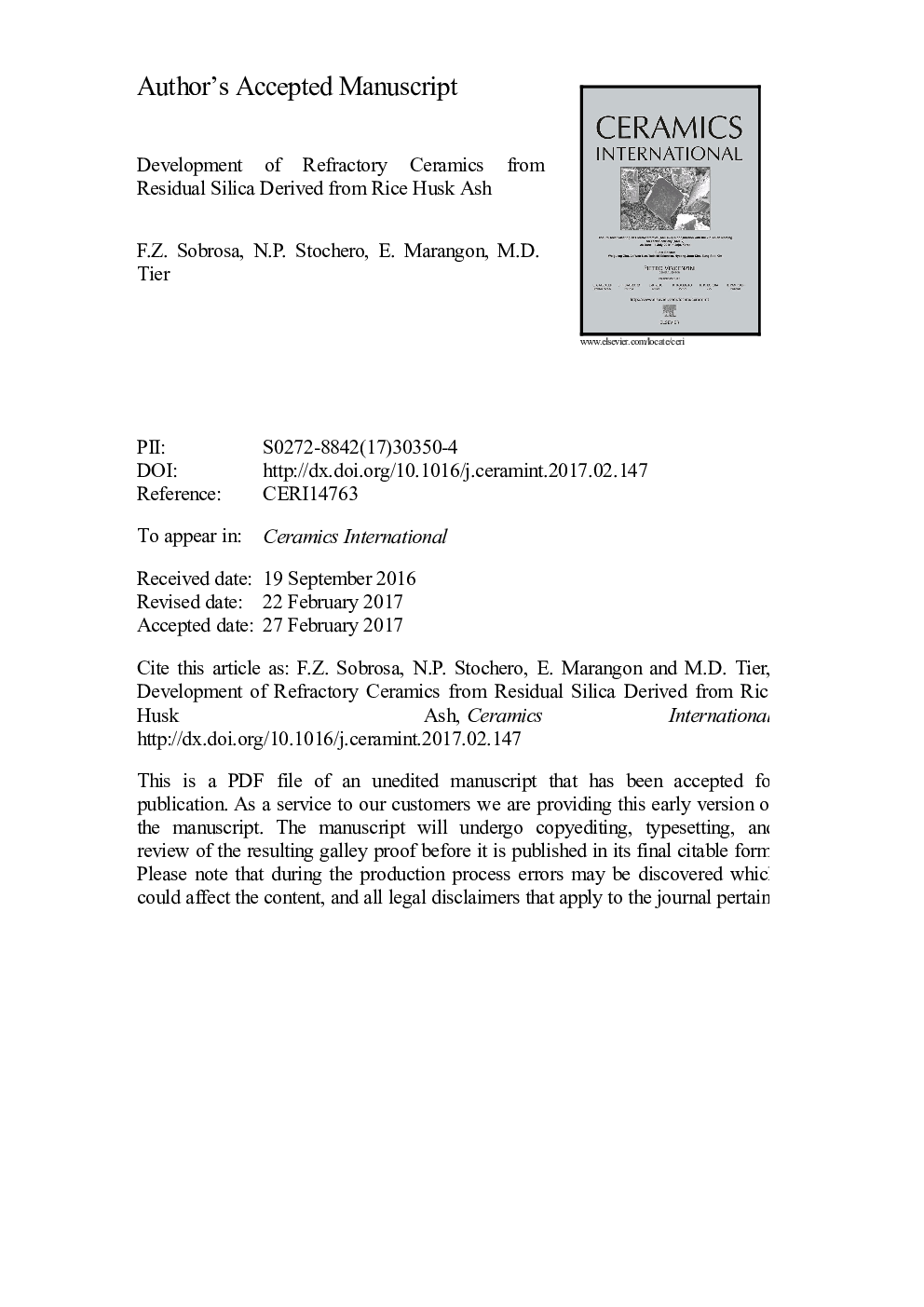| Article ID | Journal | Published Year | Pages | File Type |
|---|---|---|---|---|
| 5437962 | Ceramics International | 2017 | 21 Pages |
Abstract
Rice husk has been used as a thermal energy source for electricity generation, resulting in the formation of silica from rice husk as a by-product. This research aims to develop refractory ceramic materials by replacing kaolin clay with rice husk silica at 5%, 10% and 20% volume percentages. The samples were investigated in terms of their density, apparent porosity, tensile strength in three-point bending test, compressive strength, thermal shock and mineralogical composition. The use of 20% silica resulted in an increase in the formation of cristobalite, higher packing of granular mixtures, and consequently, an improvement in the tensile strength and compression strength of the samples. However, the material that was most successful in increasing the mechanical strength without decreasing the thermal shock strength was the sample processed with 10% clay replacement by silica from rice husk.
Related Topics
Physical Sciences and Engineering
Materials Science
Ceramics and Composites
Authors
F.Z. Sobrosa, N.P. Stochero, E. Marangon, M.D. Tier,
